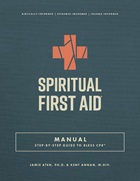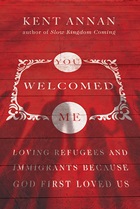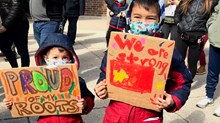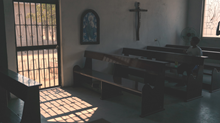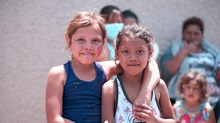Children of the Revolution
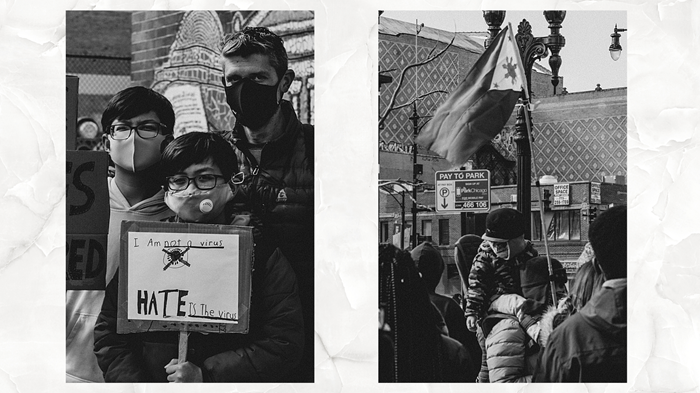
On Sunday, March 28, 2021, I was honored to participate in the Asian American Christian Collaborative's (AACC) Chicago rally to uplift and listen to AAPI voices, to lament with them, and to march. As a white woman, understanding that my posture in that moment was to listen and to come alongside, I observed a lot. I watched my AAPI sisters in Christ cry out for justice, and plead, "how long must we endure this?" I watched a multi-ethnic crowd raise their voices to weep with our brothers and sisters, encourage them, and pray for them. I watched elderly Asian store owners approach their shop windows or step outside their doors, with tears in their eyes, waving as the crowd marched past. But one observation that has truly stuck with me was the amount of children present. Holding signs, holding the hands of their parents, and holding the weight of the world on their shoulders.
While hopeful for victory over injustice through our faith, the sober reality of our reason for gathering was not lost on even the youngest of attendees. With this in mind, during this era of cultural revolution, accountability, and calls for justice, we must take a deeper look at the group that is growing up in this tension, the ones who will inherit the future we determine in these crises: children.
Children understand more than we think
Although many may believe that children are oblivious to racial and cultural differences for many years of their young life, the American Psychological Association tells us that "3-month-old babies prefer faces from certain racial groups, 9-month-olds use race to categorize faces, and 3-year-old children in the U.S. associate some racial groups with negative traits." And to take it even further, "by age 4, children in the U.S. associate whites with wealth and higher status, and race-based discrimination is already widespread when children start elementary school.”https://www.apa.org/news/press/releases/2020/08/children-notice-race If children as young as infants are already experiencing racial differences and preferences, it is truly never too early to begin having conversations about honoring God's unique creation, discussing tough history with them at an age appropriate level, and implementing anti-racist practices in your home.
Heidi Shin, an Asian-American journalist and mother, recently told the Times a disheartening story:
"In March 2020, my daughter was in first grade, eager to talk about a school assignment that asked her to write about a problem and how to be a part of solving it. Her response was that women should be paid the same as men. I felt proud. But then she continued. A classmate had written that coronavirus was a problem and that keeping Chinese people out of the country was the solution. Later the other kids asked: “Are you Chinese?” https://www.nytimes.com/2021/03/19/well/family/Talking-to-children-anti-Asian-bias.html?auth=login-email&login=email
Not only do children recognize racial differences, but they also absorb the racial opinions and preferences of their families and societal contexts. The children who attributed the global pandemic to their 5-year-old classmate certainly had not come to this conclusion on their own, but had heard, and internalized the prejudicial views of the voices in their day-to-day lives.
Children are affected by racial inequities
Besides the obvious tensions observable in the world around them, children are directly affected physically and mentally by the racial inequities in this nation. One such example of this is in the way they receive medical attention. A "chief of critical care services and a pediatric emergency medicine physician at Children’s Minnesota in Minneapolis," the hub of racial tensions following the George Floyd murder, recently told the American Medical Association, "Hospitals across the U.S. do not provide equal care to patients who present for an emergent evaluation; children of color, similar to their parents and grandparents, receive care that is different from what is provided to their non-Hispanic white peers.”https://www.ama-assn.org/delivering-care/health-equity/should-we-order-ct-kid-why-race-ethnicity-play-role This doctor, Anupam B. Kharbanda, MD, implores his medical community to partner with their surrounding contexts and provide the highest possible care to all children.
Children are even impacted at school, and "in 43 states and the District of Columbia, Black students are more likely to be arrested than other students while at school, according to an analysis by the Education Week Research Center.”https://www.npr.org/2020/06/23/881608999/why-theres-a-push-to-get-police-out-of-schools These situations also often escalate, not unlike the many headlining instances of interactions with police and adult POC. Two such incidents were "captured on body cameras in the fall semester of 2019. One officer in Florida put a 6-year-old girl in handcuffs as she sobbed. Another in New Mexico was shown shoving an 11-year-old girl against a wall. Both students were Black." If even our hospitals and our schools are not safe for children of color, where is?
So, what now?
Some may scoff at bringing kids to rallies, letting them watch trials, or even discussing current racial issues with children. But, while each parent has the ultimate say on what is appropriate for their child at their individual age, we cannot pretend that children will emerge from this era unscathed. We must be unafraid of having conversations with the children in our lives who understand and intake far more than we may realize. And especially for us white allies to our POC brothers and sisters, we too must be proactive in discussing racial issues with the children we are responsible for forming and developing. Our focus should frame each human being within the image of God, should embody compassion and empathy, and should shamelessly pursue justice and equity.
Michaela Dowen is finishing up her M.A. at Wheaton College’s Humanitarian and Disaster Institute after earning her B.A. in Cross-Cultural Ministry from The King’s University. She hopes to use all she’s learned to work with refugees internationally.
The Better Samaritan is a part of CT's
Blog Forum. Support the work of CT.
Subscribe and get one year free.
The views of the blogger do not necessarily reflect those of Christianity Today.















